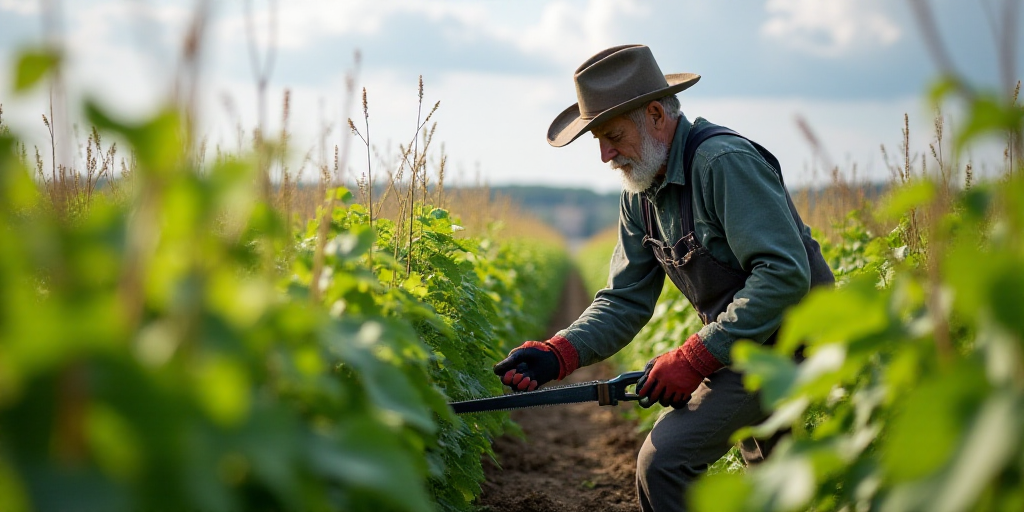Introduction to Regenerative Farming in Mexico
Only about 10% of cultivated land in Mexico, roughly one million hectares, employs regenerative agriculture practices. According to Louis García, an Agricultural Business specialist at the International Maize and Wheat Improvement Center (CIMMYT), failing to accelerate the transition from conventional agricultural models to regenerative ones could lead to a 50% decrease in maize and wheat production by 2080, jeopardizing food security and farmers’ profitability.
The Importance of Regenerative Agriculture
Regenerative agriculture not only helps mitigate climate change by reducing greenhouse gas emissions by 20-30%, but it also decreases production costs between 20% and 30%, increasing farmers’ profitability. Moreover, it allows for continuous cultivation of the same land without degradation and can even double crop yields per hectare compared to traditional methods, which often result in complete crop loss due to droughts or unusual rainfall.
Comparison of Conventional vs. Regenerative Farming
During a dry year like 2023, conventional farming practices led to total crop losses, with zero tonnes per hectare. Meanwhile, regenerative farming methods—which include crop rotation, zero tillage, and covering with stubble—maintained yields between 4 to 6 tonnes per hectare.
Barriers to Adopting Regenerative Farming
Despite its benefits, regenerative agriculture faces challenges such as insufficient infrastructure, research resources, and inadequate funding.
Call to Action by Grupo Bimbo
Héctor Ibancovichi, Director of Agricultural Business at Grupo Bimbo, urged the global agricultural industry and governments to immediately adopt regenerative farming practices. With the world population projected to reach 10 billion by 2050, food production must increase by 70% to meet the demand.
Grupo Bimbo’s Commitment to Regenerative Agriculture
Since 2018, Grupo Bimbo has collaborated with various partners to implement regenerative agriculture practices among maize, wheat, and potato farmers in Mexico. The initiative has since expanded to include countries like the United States, Canada, France, Uruguay, and Paraguay, now managing over 300,000 hectares using these sustainable techniques.
Grupo Bimbo aims to cultivate approximately 500,000 hectares using regenerative agriculture practices by the end of 2025 or early 2026. They are currently exploring opportunities in Spain, Italy, the United Kingdom, and Asia, particularly in India.
Regenerative Agriculture Techniques
Regenerative agriculture incorporates techniques such as reduced tillage, crop diversification, and permanent soil coverage. These practices minimize machinery use, conserve moisture, and enhance soil health.
CIMMYT’s Role in Regenerative Agriculture
CIMMYT operates a seed bank with over 28,000 maize varieties and 124 wheat varieties from more than 80 countries. Since last year, they have started investigating regenerative techniques for horticulture and vegetables to broaden their scope beyond grains like maize, wheat, and others.
Key Questions and Answers
- What is regenerative agriculture? Regenerative agriculture is an approach that focuses on improving and regenerating the health of soils, ecosystems, and communities through implementation of specific practices.
- Why is it crucial to adopt regenerative agriculture in Mexico? With only 10% of cultivated land currently using regenerative practices, accelerating the transition is vital to prevent a significant decrease in maize and wheat production, ensuring food security and farmers’ profitability.
- What are the benefits of regenerative agriculture? Regenerative agriculture reduces production costs, increases crop yields, mitigates climate change by decreasing greenhouse gas emissions, and promotes sustainable land use.
- What challenges does regenerative agriculture face in Mexico? Insufficient infrastructure, research resources, and inadequate funding are some of the barriers hindering wider adoption.
- What is Grupo Bimbo’s involvement in regenerative agriculture? Grupo Bimbo, in collaboration with various partners, has been implementing regenerative agriculture practices among farmers in Mexico and other countries, aiming to cultivate 500,000 hectares using these sustainable techniques by 2025 or 2026.






